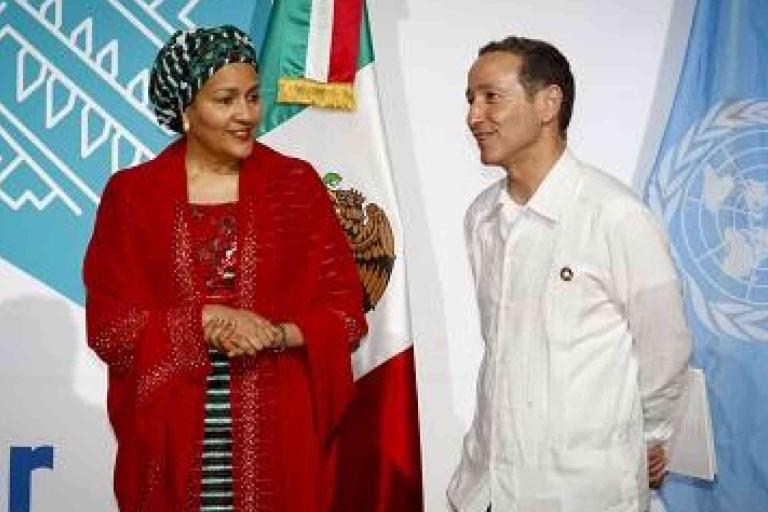Sendai Framework monitoring starts early 2018

GENEVA, 29 May, 2017 - Monitoring of progress in achieving agreed global targets for reducing disaster losses will get underway early in 2018, it was confirmed Friday, the closing day of the Global Platform for Disaster Risk Reduction in Cancun, Mexico.
This follows a data readiness review undertaken by 87 countries. Mr. Robert Glasser, the Secretary-General’s Special Representative for Disaster Risk Reduction, stated that the first cycle of monitoring progress on implementing the Sendai Framework for Disaster Risk Reduction will be launched in early 2018.
The Sendai Framework is the global plan for reducing disaster losses by 2030 and this first cycle will cover the periods 2015 to 2016, and 2017 to 2018. This cycle will end in March 2019.
Mr. Glasser said that much will depend on the availability and accessibility of the required data and it will need to be sufficiently consistent and comparable to allow meaningful measurement of progress and impact.
The Open-ended intergovernmental expert working group on indicators and terminology relating to disaster risk reduction, chaired by Ambassador Wayne McCook of Jamaica, recommended a review of the readiness of countries to report against the global targets of the Sendai Framework.
Across all regions, 87 UN Member States assessed their state of readiness to monitor and report, and specifically, the availability of national disaster-related data, disaster-related data gaps and the type of resources required to fill data gaps identified.
The Review also assessed countries’ current ability to set up baselines for measuring the global targets of the Sendai Framework. UNISDR has now prepared a Summary Report which presents the key findings of the Sendai Framework Data Readiness Review 2017.
Mr. Glasser speaking to a Plenary on Sendai Monitoring at the Global Platform last Fiiday, said that the findings show that data are available for 83% of reporting countries for Sendai Framework Target A, reducing mortality; and 66% for Target B, reducing the numbers of people directly affected.
These percentages decline to 50% for Target C on reducing disaster economic loss in relation to global GDP, and 60% for Target D on reducing damage to critical infrastructure and disruption of basic services.
The Summary Report also reveals wide data variances for Target E on the number of countries with national and local DRR strategies in place; Target F, on enhancing international cooperation; and Target G, on substantially increasing the availability of multi-hazard early warning systems and disaster risk information.
Mr. Glasser said that data are typically more available on physical damage and human impact, and less available on economic losses, losses of specific assets and infrastructure, cultural heritage and disruptions to basic services.
He said that study of the report would show the magnitude of the work that will need to be undertaken by March 2019 for countries to be able to measure progress against the global targets as planned. To this end, UNISDR will continue to support countries in developing national disaster loss databases. There are 98 at present and government ownership of these disaster loss databases is key to their viability.
Mr. Glasser said that in light of the integrated nature of reporting these datasets against both the Sendai Framework and the Sustainable Development Goals, he was optimistic that the considerable resources that are being mobilized to operationalize the global indicator framework of the 2030 Agenda for Sustainable Development will also benefit the work.

